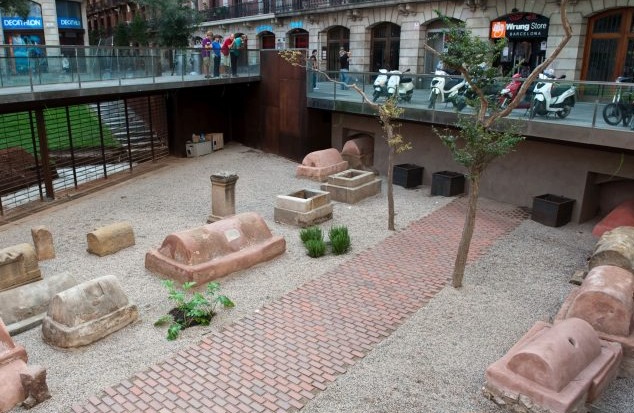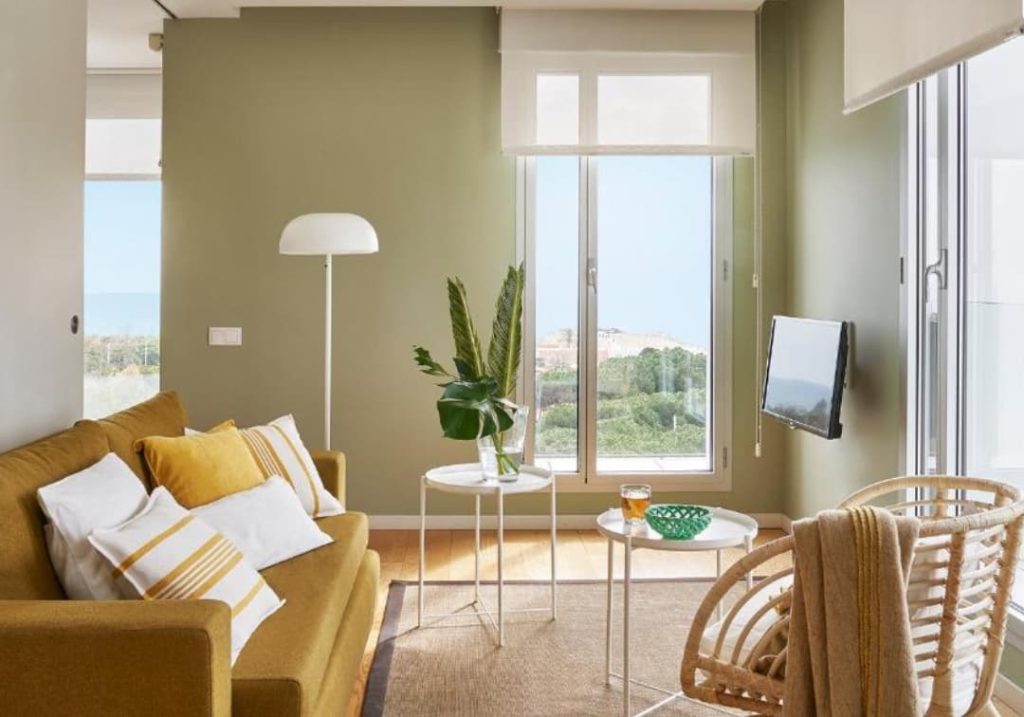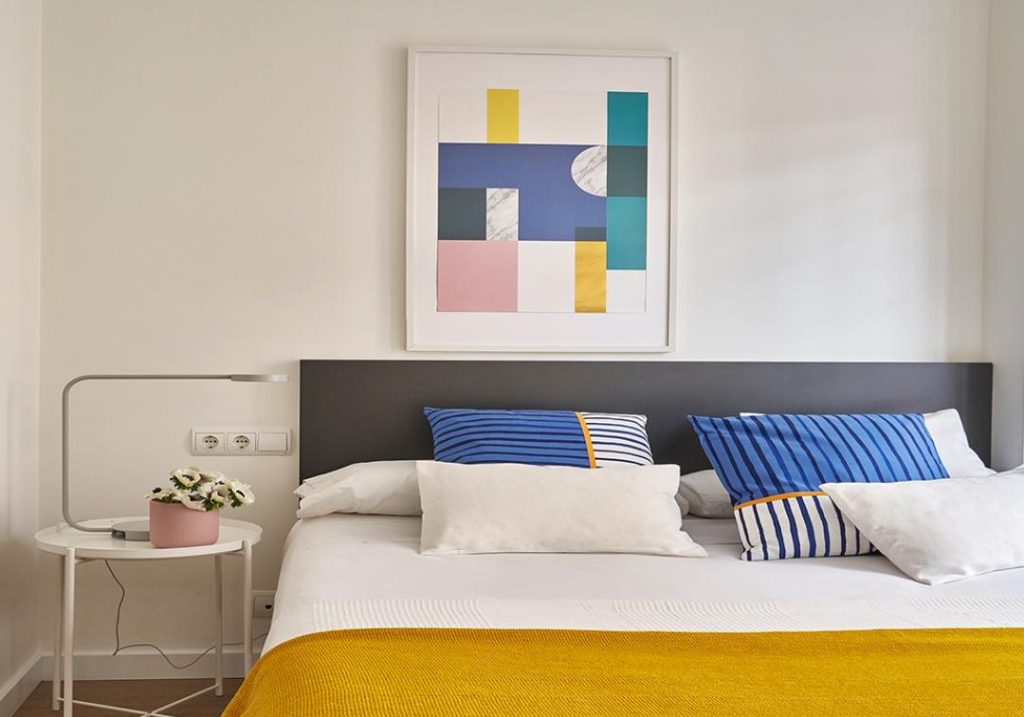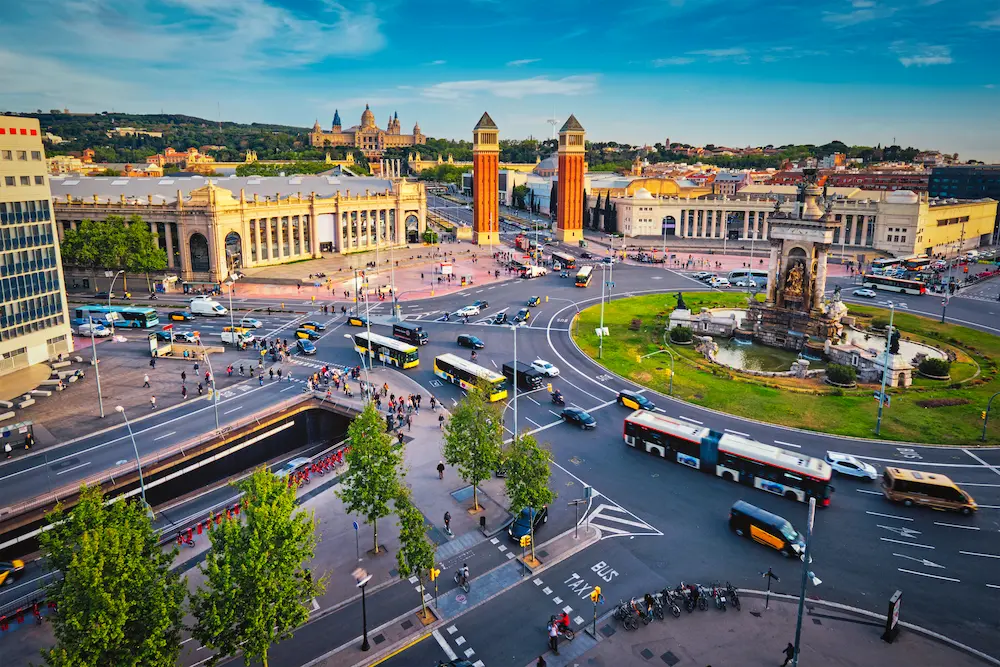If someone asks us what the first thing that comes to mind when we hear about Barcelona is, our response has to do with Antoni Gaudí’s art, the bursting of colors of the Rambles or the charming streets that weave the Gothic quarter. And although all these places are unmissable when visiting the Catalan capital, Barcelona also has another tourist attraction worth knowing: the remains of Roman Barcelona.
The small town created around the year 15 B.C. and baptized as Colonia Iulia Augusta Faventia Paterna Barcino has left us countless corners that are worth discovering without haste. Therefore, if the available time allows it and you do not have to see Barcelona in 2 days, we suggest a trip to the Roman Empire, in which domūs, walls, a magnificent temple, hot springs, shops and other constructions await. You will surely be surprised.
If all roads lead to Rome, those of Barcelona are not far behind. Want to check it out?
THE STREETS OF OLD BARCINO
The subsoil of the Plaça del Rei, one of the most striking in the city, hides a unique treasure within: the remains of the Roman Barcino from the 1st century BC, the Visigothic Barchinona (from the 7th century) and the medieval city of the 13th century. The most important part of this monumental complex, which is now part of the Museum of History of Barcelona (MUHBA), corresponds to the area occupied by the Roman colony. There you will have the opportunity to stroll through the streets of this small city, see a section of the wall and enter a laundry room, a salting and garum factory —a thick sauce made with fish guts— and a wine cellar, as well as various houses.
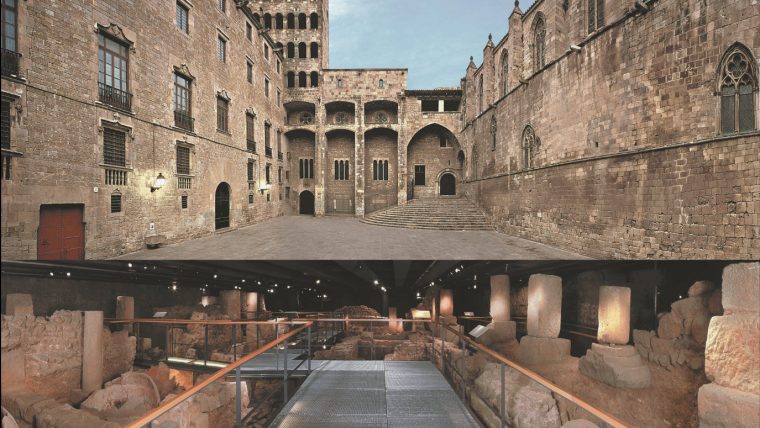
THE COLUMNS OF THE TEMPLE OF AUGUSTUS
May be hard to imagine that the interior of the block of flats of the small Carrer del Paradís, 10, accommodates four Corinthian columns and a fragment of the frieze of a Roman temple. It is the temple of Augustus, built at the end of the 1st century B.C., and it is known that it was still standing in the 5th century, although very deteriorated. Although it was documented in the Middle Ages and the Modern Age, they lost track of it until an excavation in 1835 that brought the frieze and six columns to light, half of which collapsed fifteen years later because of some works nearby. In 1879, fragments that allowed the reconstruction of another column were located. They remained in Plaça del Rei until 1956, date on which they were taken to its current location. If you want to access this peculiar space, check the MUHBA website. Admission is free.
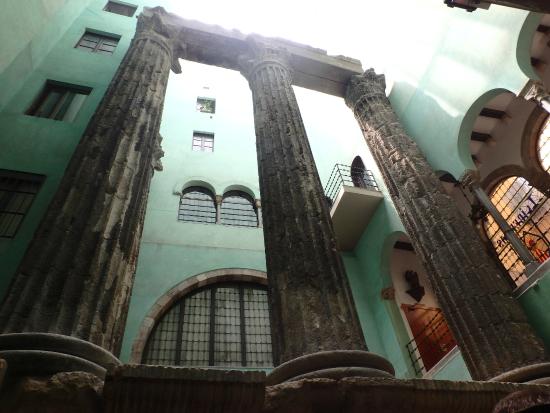
DOMUS AVINYÓ
The peculiarities of Roman Barcelona baffle some historians. Among the most unusual, we can refer to the large number of luxurious domūs that were concentrated in the city, the absence of houses for humble families within the wall, the existence of three public hot springs and even private hot springs within some homes… An example of this opulence is Domus Avinyó, opened to the public in 2015 and located next to the walled perimeter (Avinyó, 15). Dated between the first and fourth centuries A.D., it stands out for the rich pictorial decoration of the ceiling and walls. To learn about the visiting hours, we recommended you check the MUHBA website.
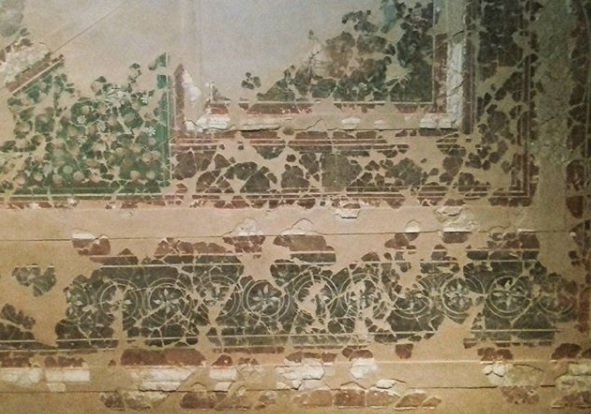
DOMUS DE SANT HONORAT
The other great house of Roman Barcelona that can be visited is located in the Jewish or Call neighborhood, on the street of Fruita, 2. This domus of the 4th century A.D. preserves an interior garden (viridarium), of about 100 m2 and a central pond (lacus) surrounded by a porticoed corridor (peristilum) with a striking mosaic pavement (opus musivum). There are also private rooms with geometric mosaics and paintings on the walls. You can also see the remains of three shops or taverns, which were possibly rented by the owner of the house. Finally, inside there are also 13th century cellars. As in the previous cases, the enclosure belongs to MUHBA and is one of the historic houses of Barcelona that are open to the public.
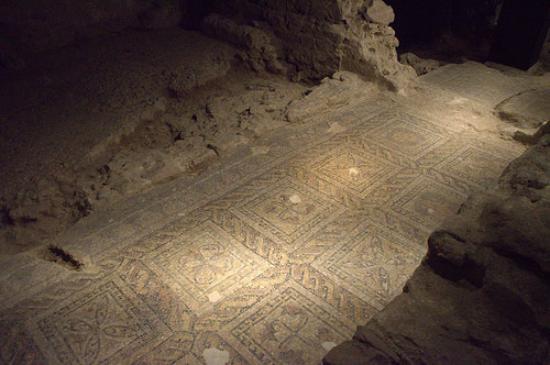
THE ROMAN BATHS OF REGOMIR
Another of the great secrets of the Gothic quarter are its public baths, a fragment of the wall and two Roman towers that were located in 1998. The remains are located at the bottom of number 7-9 of Carrer Regomir, an extension of the Pati Llimona civic center (access is free and free within opening hours). The wet area, known as thermal seawater springs, is from the 2nd century, while the section of the wall and the towers correspond to the 4th century. In this place, you will also witness some curious details, such as the remains of a fireplace that belonged to a medieval home.
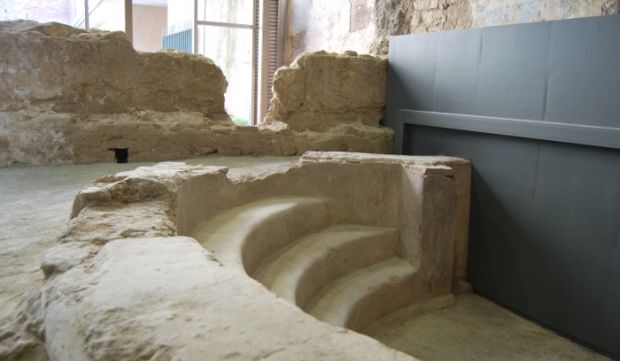
AQUEDUCT OF BARCELONA
Before building the first wall of Barcelona, the Romans built an aqueduct that would supply the new colony with water from the Besòs River. Hence, it is considered the first public construction of Barcino. Hidden for centuries after subsequent buildings, this conscientious piece of engineering has preserved four arches on the wall of an 18th-century building, located in the Plaça del Vuit de Març. Rediscovered in 1988, the aqueduct is one of the least known traces of Roman Barcelona, but it is well worth a visit. As it is found on the street, you can get there at any time of the day.
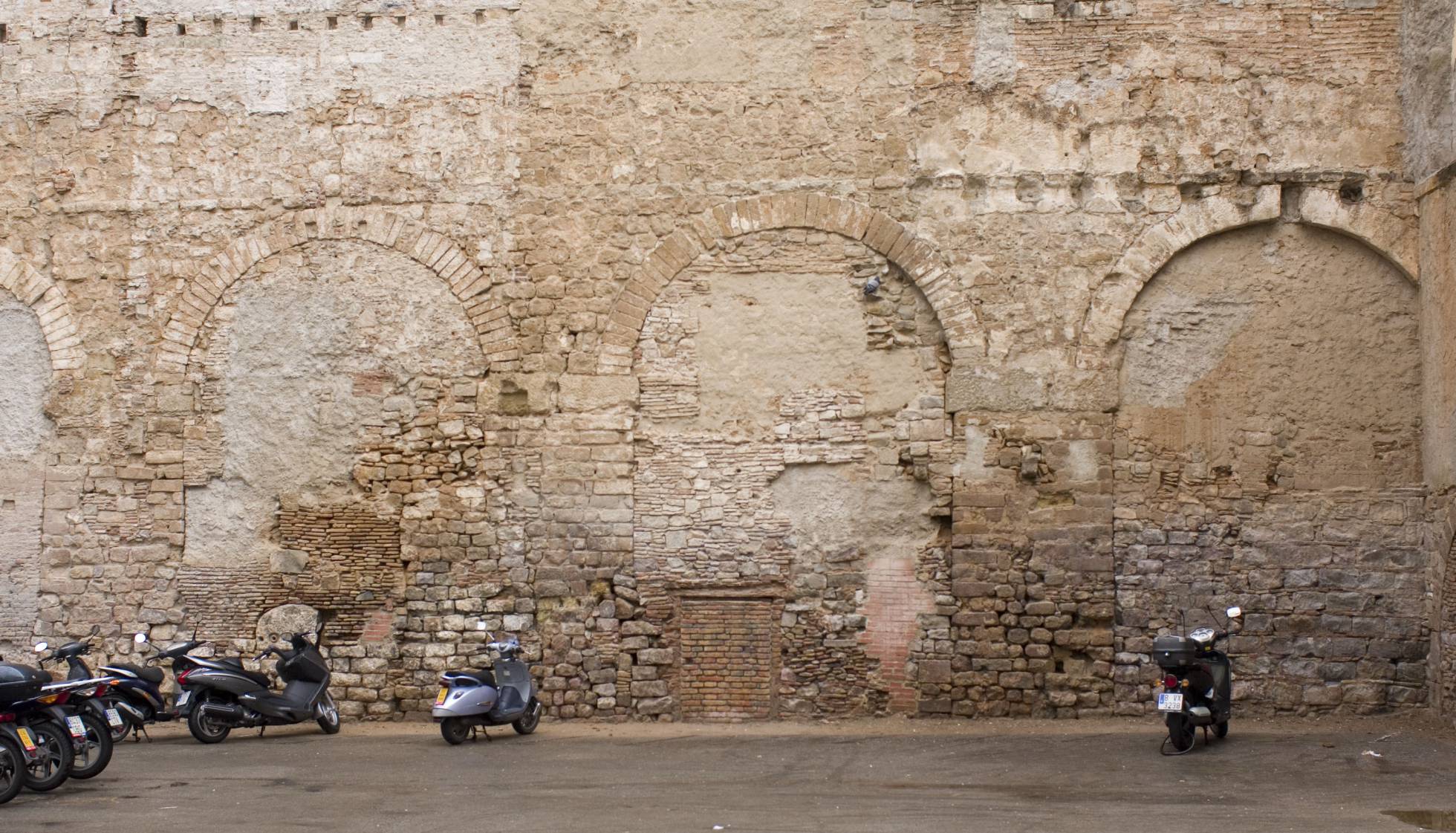
PLAÇA NOVA GATE
The origins of the Plaça Nova must be sought in 1358, when the mercat de la Palla (‘straw market’) was located there. Here, one of the four entrance gates to the city was located, which gave access to the forum through one of the two main streets of Barcino: Cardo. Although this part of the wall was remodeled in the 12th century, both the wall and the defense towers were built between the 1st century B.C. and 4th A.D. The reconstruction (1958) of a fragment of the Roman aqueduct can be seen in the tower on the left, attached to the Casa de l’Ardiaca. Just ahead, there is a visual poem by the artist Joan Brossa, which forms the word Barcino.
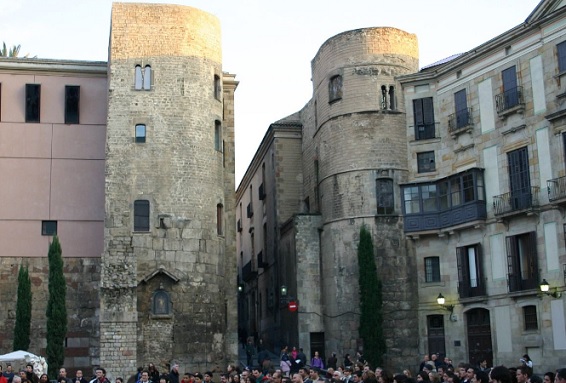
ROMAN TOMB ROAD
Located in the current Plaça de la Vila de Madrid, the Roman sepulchral route is a secondary road that connected the Barcino colony with what is now as the Sarrià neighborhood. On both sides, you can see a necropolis with humble people’s graves who lived between the 1st and 3rd centuries A.D. Gradually, the area was buried. In 1588, a Carmelite convent which is now disappeared was built just above it. The recovery of the old Roman cemetery did not take place until 1956, the year in which the place was excavated to build the building that currently stands in the southeast of the square. The enclosure is part of the MUHBA, so we recommend you take a look at its website to know the visiting hours.
On the other hand, we must not lose sight of the fact that the Museu d’Arqueologia de Catalunya (MAC) –Passeig de la Santa Madrona, 39– also accommodates a good number of Roman sculptures and mosaics. One of the most spectacular is the Circus mosaic, almost 8 m long and discovered in the Palau Comtal Menor in 1860. This piece of art represents a chariot race that was probably held at the Circus Maximus in Rome.
If you stay in our holiday rental apartments in Barcelona, it will be very easy for you to visit the Gothic quarter (you can take the subway at Poblenou, on L4, and get off at the Jaume I stop, on the same line). Of course: remember that the MAC is in the area of Montjuïc.
What do you think of this tour of Roman Barcelona? If you have already done it or want to suggest other points of interest, do not hesitate to send us your comments.
